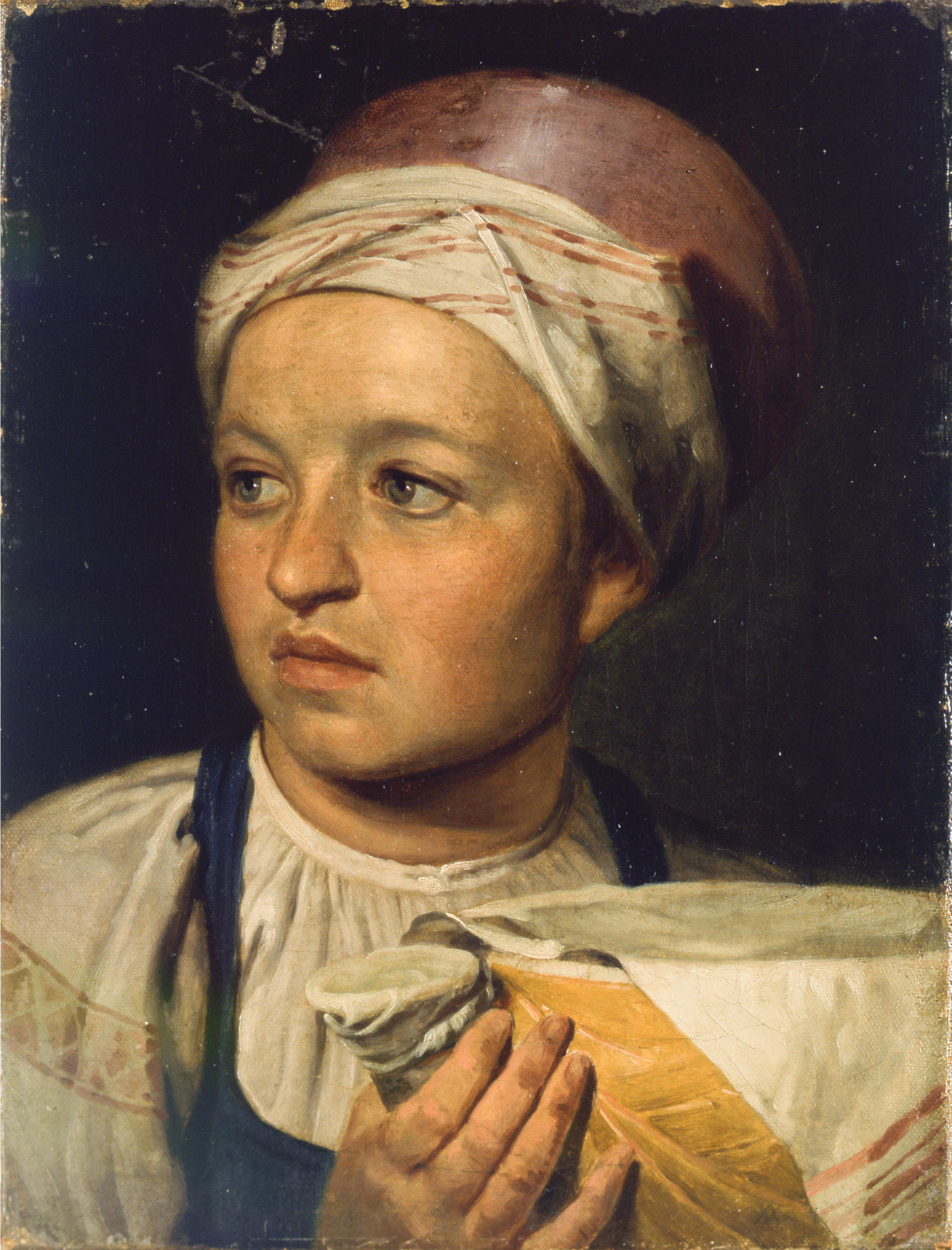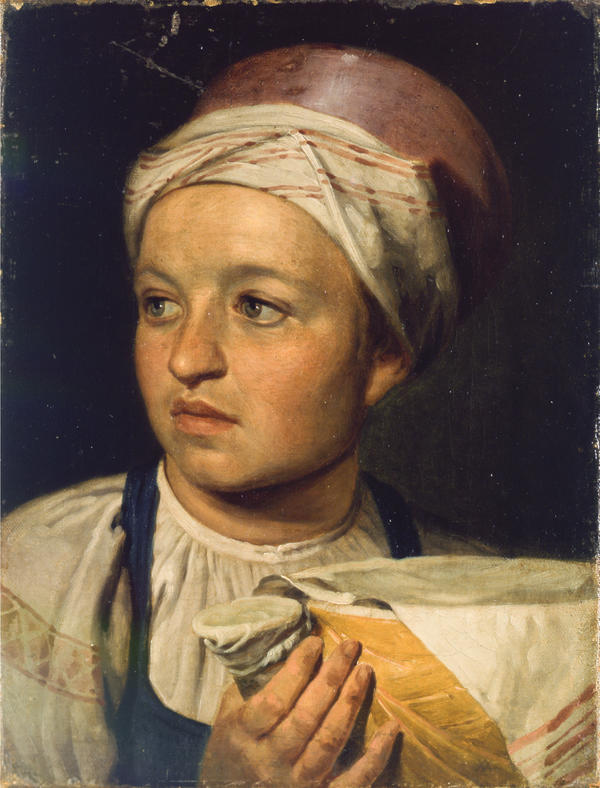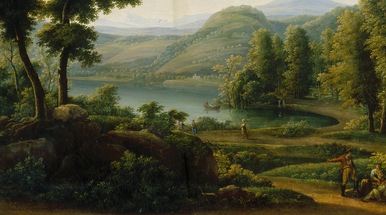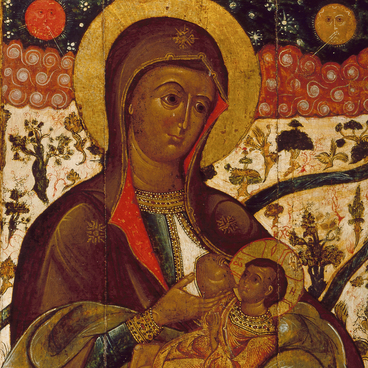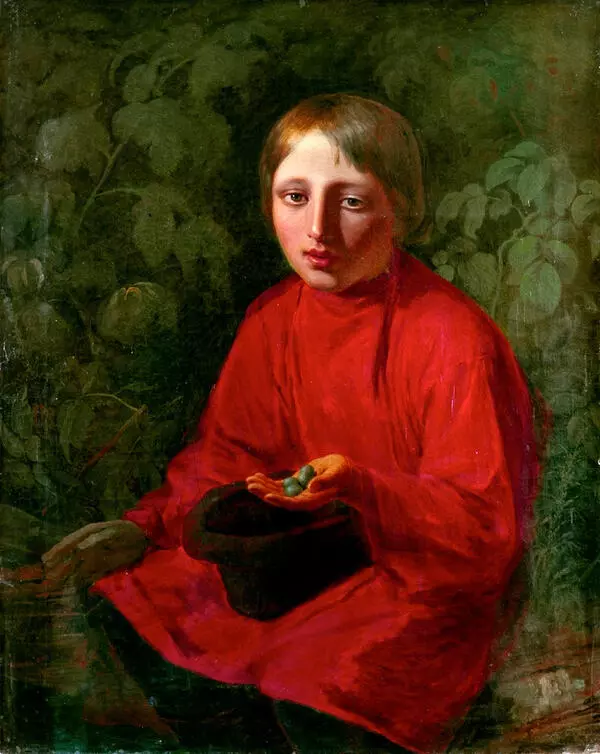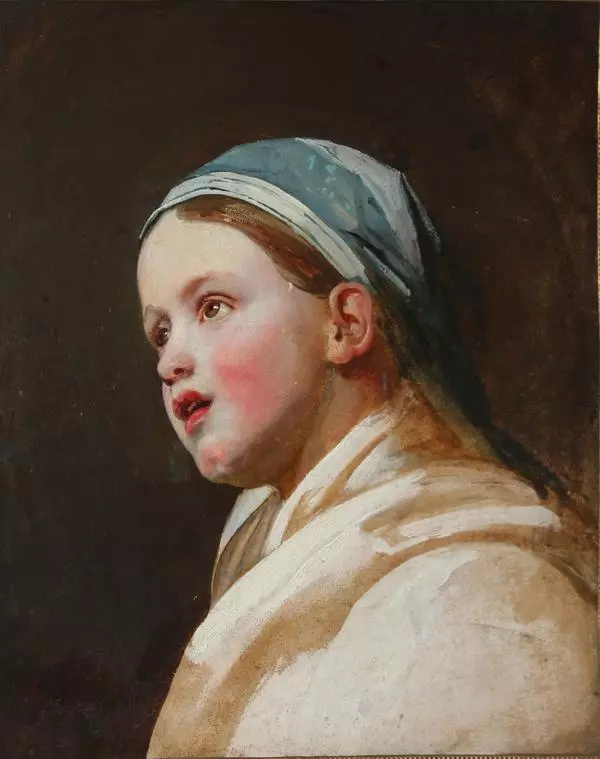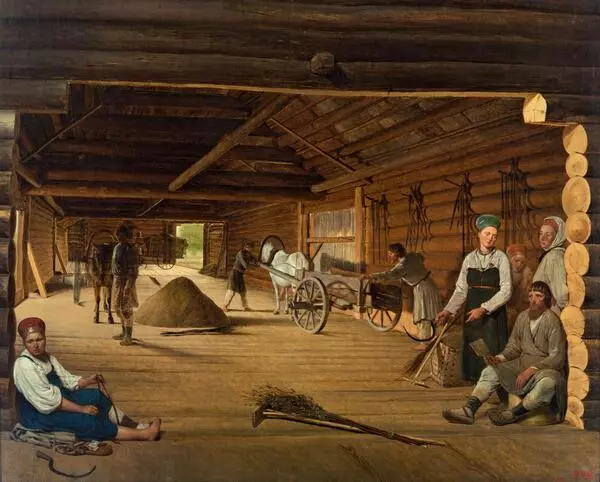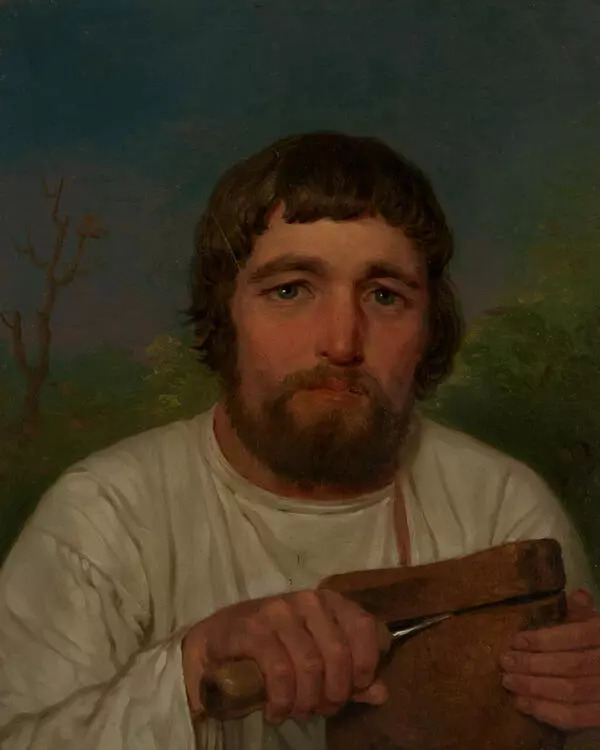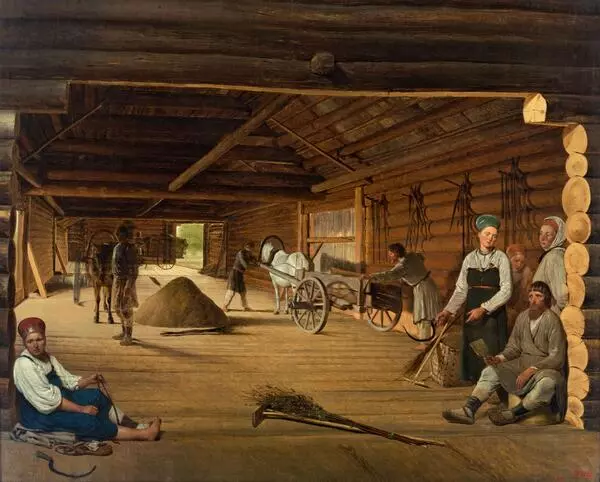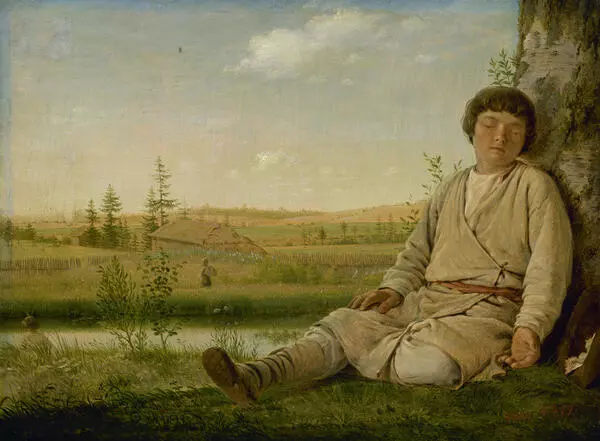Alexey Gavrilovich Venetsianov is a painter, drawer, engraver and lithographer. According to the family legend, the great-grandfather of the artist moved to Russia from Greece in 1740-s, and received the nickname Venetsiano (the Venetian), which later transformed into a Russian surname.
The future artist studied painting and drawing independently. Alexey Venetsianov served in the Post Department, and at the same time, he went to the Hermitage to copy famous paintings and worked under the supervision of Vladimir Borovikovsky, a famous Russian portraitist.
In 1807, Alexey Venetsianov started publishing a satiric journal of cartoons. In 1811, he received the title of ‘appointed’ from the Academy of Arts for his Self-Portrait, and later in the same year — the title of academic for the portrait of K.I. Golovachevsky, Inspector of the Academy of Arts, with three Academy alumni.
In 1812–1813, together with Ivan Terebenev, a sculptor, and Andrey Ivanov, an artist, Venetsianov was working on a series of political cartoons pertaining to 1812 war with Napoleon. In 1819, Venetsianov went to the country, to Tver Province, and in 1820, he founded his own school, in which he had 70 apprentices including Alexander Alexeyev, Sergey Zaryanko, Grigoriy Soroka, Alexey Tyranov and others. Venetsianov exhibited their pieces together with his own paintings at academic exhibitions.
In 1830-s, the artist turned to the life and daily chores of Russian peasants. In his small estate near Moscow, Safonkovo, Alexey Venetsianov created his most famous paintings On Ploughed. Spring and Reaping. Summer.
Pavel Svinyin, an art critic, appraised Venetsianov’s paintings at the exhibitions and wrote:
The future artist studied painting and drawing independently. Alexey Venetsianov served in the Post Department, and at the same time, he went to the Hermitage to copy famous paintings and worked under the supervision of Vladimir Borovikovsky, a famous Russian portraitist.
In 1807, Alexey Venetsianov started publishing a satiric journal of cartoons. In 1811, he received the title of ‘appointed’ from the Academy of Arts for his Self-Portrait, and later in the same year — the title of academic for the portrait of K.I. Golovachevsky, Inspector of the Academy of Arts, with three Academy alumni.
In 1812–1813, together with Ivan Terebenev, a sculptor, and Andrey Ivanov, an artist, Venetsianov was working on a series of political cartoons pertaining to 1812 war with Napoleon. In 1819, Venetsianov went to the country, to Tver Province, and in 1820, he founded his own school, in which he had 70 apprentices including Alexander Alexeyev, Sergey Zaryanko, Grigoriy Soroka, Alexey Tyranov and others. Venetsianov exhibited their pieces together with his own paintings at academic exhibitions.
In 1830-s, the artist turned to the life and daily chores of Russian peasants. In his small estate near Moscow, Safonkovo, Alexey Venetsianov created his most famous paintings On Ploughed. Spring and Reaping. Summer.
Girl with Milk Jug is part of a series of peasants’ portraits created by the artist in 1820-s. Having pushed away conventional academic rules, Alexey Venetsianov strived for the most accurate conveying of reality. In the unsophisticated face of a peasant girl, he found deep inner poetic sentiment and exposed her righteous rich character.
Pavel Svinyin, an art critic, appraised Venetsianov’s paintings at the exhibitions and wrote:
